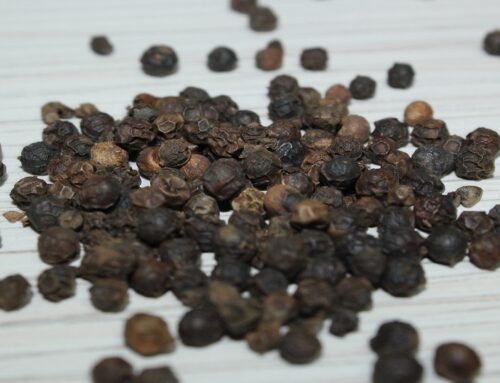According to FAO i.e. Food and Agriculture Organisation, Food additives are non-nutritive substances added intentionally to foods, generally in small quantities, to improve its appearance, flavour, texture, or storage properties.
According to FDA (Food and Drug Administration), USA, Food additive is a substance or a mixture of substances, other than a basic food stuff, which is present in a food as a result of any aspect of production, processing, storage, or packaging.
Functions of Food Additives
- As coloring and flavouring agents that enhances the attractiveness and flavor of foods
- As antioxidants to maintain the nutritional quality of processed foods
- As antimicrobial and emulsifying agents
- As bleaching and clarifying agents
- As stabilizing and sterilizing agents
- As sweetening and thickening agents
- As food preserving and chelating agents
- Other functions such as acidifying, making alkaline, creaming, curing, and conditioning
Classification of Food Additives
- Antioxidants
- Preservatives
- Sequestrants
- Surface- active agents
- Colouring agents
- Buffers ,acids and alkalies
- Stabilizers and thickeners
- Nutrients supplements
- Non – nutritive and special dietary sweeteners
- Flovouring agents and flavor enhancers
- Anticaking agents and humectants
- Bleaching and maturing agents (flour improvers) and starch modifiers
- Other additives
Food Antioxidants: An antioxidant is a substance which when added to fats and fat containing foods prevent their oxidation and thus prolongs their shelf- life, wholesomeness and palatability. Antioxidants function by interrupting the free radical chain reaction involved in lipid oxidation. It should be effective in low concentration (0.01 to 0.02 per cent). It should be fat-soluble.
Food Antioxidants: Examples
- Butylated Hydroxyanisole (BHA)
- Butylated Hydroxytoluene (BHT)
- Tertiary- Butylhydroquinone(tbhq)
- Propyle Gallate (PG)
- Thiodipropionic acid
- Dilauryl thiodipropionate
- Stannous chloride
- Tocopherols
- Sulphur dioxide
- Ascorbic acid
Food Preservatives: Food preservatives may be any substance which is capable of inhibiting, retarding or arresting the growth of microorganisms in foods. Food preservatives may be a chemical or a natural substance such as sugar, salt or acid.
Food preservatives: Examples
- Sulphur dioxide and sodium benzoate
- Sodium and calcium propionate(as mould inhibitor in bread and cake)
- Sorbic acid (as mould and yeast inhibitor in cheese and baked products, fruit juices,wines and pickles)
- Chlorine compounds (as a germicidal wash for fruits and vegetables)
Sequestrants: Sequestrants combine with metals such as iron and copper and remove them from food products; hence known as chelating agents or metal scavengers. Presence of metal traces in foods causes discoloration, rancidity, turbidity, oxidation and flavour changes in foods and hence must be removed.
Sequestrants: Examples
- Ethylene Diamine Tetra Acetic Acid(EDTA)
- Polyphosphates
- Citric Acid
- Calcium and Sodium Salts Of Organic Acids
- Calcium Chloride
- Calcium Phosphate
- Tartaric Acid
Surface -Active Agents or Emulsifiers: Emulsifying agents are used to prepare various types of emulsions:
- Oil- in-water emulsions
- Water- in-oil emulsions
- Gas- in- liquid emulsions
- Gas – in – solid emulsions
Surface -Active Agents or Emulsifiers: Examples
- Lecithin: A naturally occurring emulsifier
- Synthetic emulsifiers
- Mono and Diglycerides and Their Derivatives
- Certain Fatty Acids and Their Derivatives
- Bile Acid
- Propylene Glycol Monostearate
- Monosodium Phosphate
Colouring Agents: Food colours are added to foods to make them attractive and appetizing. Natural food colours and Synthetic food colours are available. Examples of natural food colours are: extracts of annatto, caramel, carotene and saffron. Popular example of synthetic food colours are: coal tar dyes. Carbon black (used to impart blackness to foods) and titanium dioxide (used to intensify whiteness of foods) are also used as food colours.
Buffers, Acids and Alkalies: Buffers, acids and alkalies are used in control or adjust the pH of foods and affect the food properties such as flovour, texture and cooking qualities. Acidifying agents are used to reduce the pH of foods; that is to make the foods acidic. Alkaline agents are used to increase the pH of foods; that is to make the foods alkaline. Acid may be naturally present in foods such as fruits and fermented food products like curd.
Buffers, Acids and Alkalies: Examples
- Alkaline Agents
- Ammonium Carbonate
- Ammonium Hydroxide
- Calcium Carbonate
- Calcium Chloride
- Calcium Citrate
- Sodium Acetate
- Sodium Bicarbonate
- Sodium Hydroxide
- Acidifying Agents
- Citric Acid
- Acetic Acid
- Lactic Acid
- Malic Acid
- Succinic Acid
- Tartaric Acid
- Sulphuric Acid
Food Stabilizers and Food Thickeners
- Food stabilizers and thickeners help to improve the texture and stability of foods
- They inhibit crystallization of sugar
- They inhibit formation of ice
- They stabilize emulsions and foams
- They reduce stickiness of icings on baked products
- They combine with water to form gels and make the food viscous
Food Stabilizers and Food Thickeners: Examples
- Food stabilizers and thickeners- examples
- Gum Arabic
- Agar-agar
- Alginic Acid
- Starch And Its Derivatives
- Gelatin
- Pectin
- Amylose
- Carboxy Methyl Cellulose (CMC)
- Carrageenan
- Hydrolyzed Vegetable Proteins
- Foods where food stabilizers and thickeners are used
- Gravies
- Pie Fillings
- Cake Toppings
- Chocolate Milk Drinks
- Jellies
- Puddings
- Salad Dressings
Nutrient Supplements: During storage, food nutritional quality suffers. Therefore it is essential that nutrient supplements be added to foods during processing. Main nutrient supplements added to foods are vitamins and minerals. For example:
- Vitamin D is added to milk
- Vitamin B, iron and calcium are added to cereal products
- Iodine is added to salt
- Vitamin A is added to margarine
- Vitamin C is added to fruit-juices and fruit-flavoured desserts
Sweetening Agents/Sweeteners: Non-nutritive sweeteners and non-sugar sweeteners are available in the market. Non-nutritive sweeteners are added to low-calorie soft drinks, low-calorie liquid foods, canned fruits, frozen desserts, salad dressings, and some baked products. Non-sugar sweeteners are added to foods for diabetics; helps control weight. Some popular sweetening agents available in the market are:
- Glycyrrhizic acid (obtained from licorice root)
- Stevia (obtained from leaves of a herbal plant called stevia)
- Neohespiridine, a dihydrochalcone isolated from citrus peel
Flavouring Agents and Flavour Enhancers: Flavouring agents add flavor and taste to foods. Two types: Naturally occurring flavoring agents and synthetic flavoring agents. Naturally occurring flavoring agents:
- Spices, herbs, plant extracts (roots, leaves, stems, flowers) etc
- Plant essential oils
Synthetic flavoring agents: Esters,aldehydes, ketones, alcohols and ethers
Flavouring Agents and Flavour Enhancers: Examples
- Synthetic flavoring agents
- Amyl Acetate for Banana
- Methyl Anthranilate for Grapes
- Ethyl Butyrate for Pineapple
- Flavor enhancers
- MSG: Mono Sodium Glutamate extracted from seaweeds and soybean
- Ribonucleotides (5-nucleotides) extracted from yeast
Anticaking Agents: Anticaking agents prevent food particles from adhering to each other and becoming a solid lump in wet climate. They readily absorb the excess moisture present in foods. Some anticaking agents coat the food particles to make them water-repellent. Some dilute the food mixture with insoluble particles.
Anticaking Agents: Common Examples
- Calcium silicate
- Calcium silicate is a popular anticaking agent and is used to prevent lump formation of baking powder and table salt
- Calcium silicate is also used as an anticaking agent in spice mixtures that may contain various spice essential oils; calcium silicate is able to absorb oils from the spice mixtures thus preventing lump formation
- Calcium and magnesium salts of long-chain fatty acids : Calcium stearate
- Calcium stearate is used as conditioning agents for dehydrated vegetables, salts and food products in powdered form
- Other anticaking agents in the market
- Sodium silicoaluminate, Tricalcium phosphate, Magnesium silicate, Magnesium carbonate
Humectants: Humectants are moisture-retention agents. Functions of humectants:
- Control of viscosity, texture, and bulking
- Retention of moisture
- Reduction of water activity
- Inhibition of crystallization
- Improvement or retention of softness
- Improvement of rehydration of dehydrated foods
- Solubilization of flavouring agents
Humectants: Examples: Poly Hydroxy Alcohols are water-soluble, hygroscopic and moderately viscous in high concnetrations in water and hence are used as humectants. Examples are, Propylene Glycol, Glycerol Sorbitol, and Mannitol.
Bleaching And Maturing Agents and Starch Modifiers
- Bleaching and maturing agents are oxidizing agents that are used to improve the food quality of freshly milled flours
- Benzoyl peroxide is used as a bleaching agent to reduce the yellow colour of fresh flour and to improve its baking quality
- Other bleachign agents are: oxides of nitrogen, chlorine dioxide and some other chlorine compounds
- Hydrogen peroxide is used as an oxidizing agent in cheese-making; it whitens the colour of milk
- Bromate and iodate improve baking quality of bread dough
- Starch modifiers improve the water solubility of starch; example: sodium hypochlorite
Other Food Additives
- Firming agents are added to fruits and vegetables to keep them crisp and firm. Examples are Calcium Chloride and Aluminium Sulphate
- Clarifying agents are used to remove sediments of fruit juices, wines and beers
- Solvents are used to dissolve the suspended flavouring agents, dyes and other ingredients present in food products
- Anti-sticking agents: Hydrogenated sperm oil
- Meat curing agents: Sodium nitrite and sodium nitrate
- Crystallization inhibitors: Oxystearin
- Growth stimulants: Gibberellic acid
- Leavening agents: Ammonium sulphate
- Freezing agents: Liquid nitrogen
- Enzymes: Rennin for cheese and curd making, Papain for tenderizing meat, and Pectinase for clarifying beverages
Check out our publishing services here…
We publish top quality videos on various ‘Food & Agriculture’ topics. You may subscribe our video channel here…






